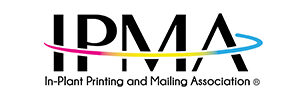It’s amazing to think how paper and packaging has impacted our daily lives. In an age of software solutions and apps on every mobile device, paper and hard collateral are still a prevalent part of our day to day lives. In this digital age we are told that paper is a relic of the past and printing will go the way of dial up internet. In my experience, I not only see the paper industry relevant today but also expanding to come into age of our new sustainability-focused future.
As the marketplace evolves with an emphasis on renewable technology, carbon sequestration, and the prevention of climate change, sustainability is becoming an increasing standard to be met. More and more, I am being approached by companies wanting to expand their sustainability portfolios. With a background in environmental consulting, there are many avenues to help companies expand their sustainability. But, with paper being so defined and ingrained in society it presents a unique opportunity for companies to expand beyond that of internal marketing or branding. “How might we use a material that has traditionally been associated with unsustainability and deforestation and flip the script to promote a green and more environmentally friendly outcome?” Paper allows companies to communicate their sustainability goals directly to their clients. Companies can market those goals on a brochure or poster — any package or direct mail can have a marking showing the sustainability goals, illustrating a physical touchpoint for the company to promote and market directly to the end user.
As the conversation around sustainability continues, the printing industry has taken steps to offer sustainable solutions to match their client’s ambitions. Printers have the option of offering more sustainably sourced paper through the use of Chain-of-Custody tracking such as Forest Stewardship Council (FSC) and Sustainable Forest Initiative (SFI) paper stocks. Additionally, recycled paper and packaging is becoming a common place in the market. With each of these options the actual physical item of paper is created or harvested in a sustainable way according to these organizational standards. Oftentimes, the paper is being tracked and audited by a third party to hold up said standards. These options of paper have grown in the marketplace and can often be seen on a piece of mail or packaging that is being delivered to your front door.
As with many industries, new technology solutions are providing innovative ways that companies see sustainable paper. One of these options is the use of the software platform PrintReleaf. PrintReleaf is not a paper stock but rather a certified system solution that offsets the companies paper consumption by reforesting trees. With this solution, a company can pick a reforestation project and offset their paper within the system. PrintReleaf will then offer the client a certificate of reforestation to promote on any package or mail they are sending to their end user. Again, highlighting their sustainability throughout the printing process.
Sustainability is creating a conversation between the printing industry and their clients. The industry will have to recognize the need for sustainable paper and packaging as well as offer solutions catering towards the client’s specific needs at that time. I have no doubt that with the already established options such as FSC, SFI, and recycled paper as well as the emerging solutions on paper consumption such as PrintReleaf. Printers are able to offer a diverse and wide portfolio to fit each printing situation suitable not just for the client, but as well as our new green economy.

Rylan MacVey serves as the Director of Business Development at PrintReleaf. He is a skilled customer relationship manager with over 5 years of environmental consulting in nonprofits, government, technology and education. Rylan serves as a lead contact for printers exploring the environmental and industrial benefits of PrintReleaf.
